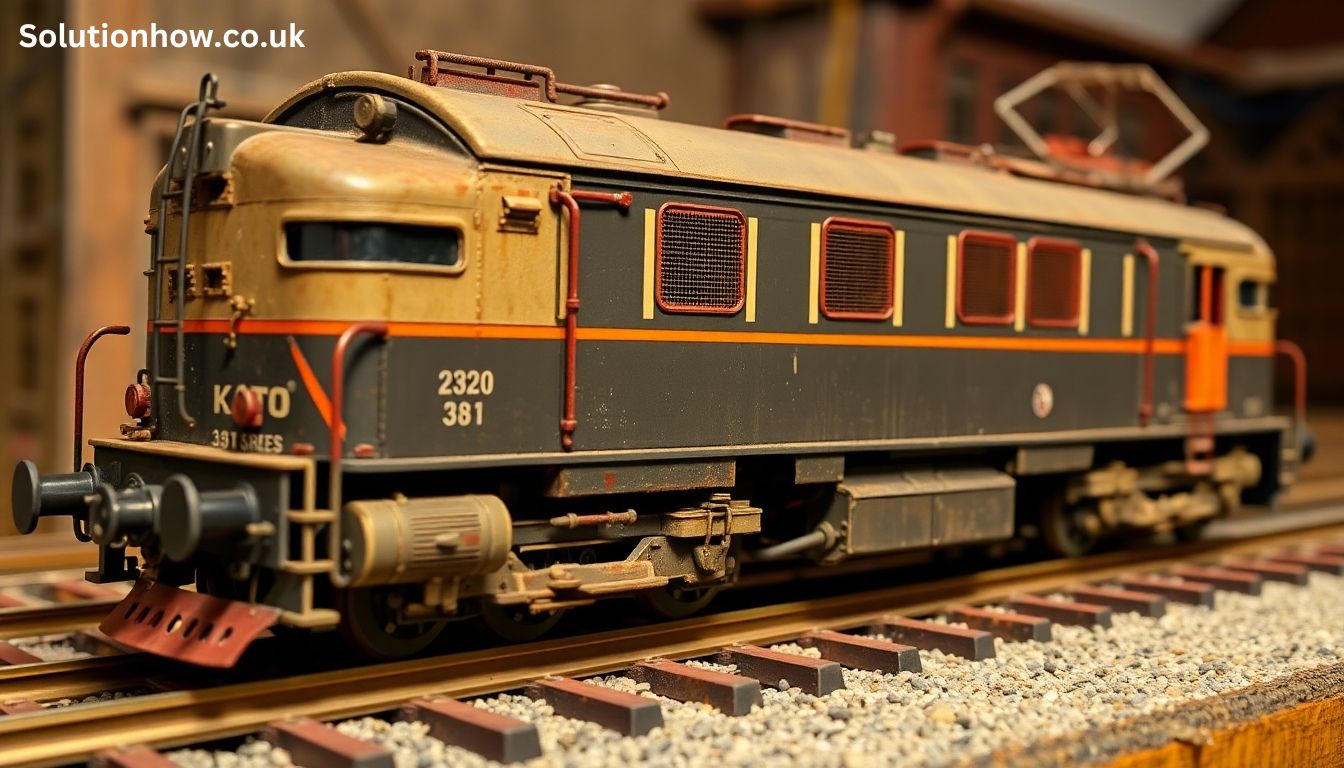The Kato 381 Series Weathering is an exceptional model that captures the essence of Japan’s renowned limited express trains. For railway enthusiasts, adding weathering to this model can significantly enhance its realism, transforming it into a lifelike representation of a train that has braved years of operation. This guide explores the art of weathering, focusing on achieving authentic results while maintaining the integrity of the Kato 381 series model.
Understanding the Importance of Kato 381 Series Weathering
Weathering is the process of replicating the natural wear and tear experienced by real trains over time. It adds depth and character to your model, making it appear like a true veteran of the tracks. The Kato 381 Series Weathering, with its intricate design and historical significance, serves as a perfect canvas for weathering techniques that emulate exposure to dirt, grime, and environmental conditions.
Preparing Your Kato 381 Series for Weathering
Preparation is a crucial step before applying weathering techniques. Start by cleaning the model thoroughly. Dust and grease can prevent paints and powders from adhering properly, so ensure all surfaces are wiped clean with a soft cloth or brush. For more intricate areas, a small brush or cotton swab can be useful.
Disassembling the model is recommended for a more precise application. Separating components such as the roof, undercarriage, and bogies allows you to apply weathering materials evenly. Always handle the parts gently to avoid damage, especially to the smaller, delicate details.
Analyzing Real-Life References for the Kato 381 Series
To achieve realistic weathering effects, study photographs of the actual 381 series trains. Look for areas where dirt and grime naturally accumulate, such as the undercarriage, bogies, and around vents. Pay attention to patterns of wear, including rust streaks, faded paint, and soot deposits. Using these references as a guide will ensure your model accurately reflects the wear and tear of its real-world counterpart.
Techniques for the Kato 381 Series Weathering
Creating a Realistic Undercarriage
The undercarriage of the Kato 381 series is exposed to a great deal of dirt and grime during operation. To replicate this, use dark brown or black weathering powders. Apply these materials with a soft brush, focusing on the areas near the wheels and axles.
Rust is another critical detail for the undercarriage. Paint small streaks of orange and brown tones along springs and bolts to emulate rust. Layer these colors to add depth, and ensure the effect looks natural by blending the edges with a damp brush or cotton swab.
Enhancing the Body Panels
Body panels on the Kato 381 Series Weathering often show signs of fading and grime streaks. To replicate faded paint, mix white or light gray acrylic paint with water to create a wash. Apply this wash with an airbrush or soft brush, working in thin layers to achieve a subtle, sun-faded effect.
Grime streaks can be created using diluted black or dark gray paint. Using a fine brush, apply thin vertical lines from panel seams, windows, or vents. Blend the streaks with a dry brush or soft applicator to soften the effect.
Adding Weathering to the Roof
The roof of the Kato 381 series is frequently subjected to soot and grime, particularly around vents and exhaust areas. Black weathering powder or paint can be applied to these areas to simulate soot buildup. Blend outward to create a gradient effect, ensuring the transition looks natural.
For added realism, highlight raised details on the roof, such as vents or ridges, with a dry brush. A light gray paint works well for this, creating the appearance of aged and weathered surfaces.
Detailing the Front and Rear of the Kato 381 Series
The front and rear ends of the train often bear unique weathering patterns. Dirt accumulates around headlights, couplers, and edges due to wind and frequent use. Use a mixture of brown and black powders to replicate this effect, blending carefully to maintain realism.
Scratches and minor scuffs can be added with a fine brush and metallic silver paint. Apply these sparingly, focusing on areas likely to experience contact, such as corners and door edges.
Advanced Kato 381 Series Weathering
Airbrushing is an advanced technique that can take your weathering to the next level. Use an airbrush to apply smooth gradients of dirt and grime, particularly on the lower body panels and undercarriage. Diluted white or gray paint can also be airbrushed onto panels to simulate fading.
Layering is another critical technique. By building up weathering materials in stages, you can create a more realistic and dynamic appearance. Start with lighter tones for a base layer, then add darker colors and rust effects for contrast. Each layer should be sealed with a matte varnish to protect your work and maintain the integrity of the model.
Finishing the Weathering Process
Once the weathering is complete, seal the model with a matte or satin varnish. This step not only protects your work but also gives the Kato 381 Series Weathering a professional finish. Use a spray can or airbrush for an even coat, and allow the varnish to dry thoroughly before reassembling the model.
Carefully reattach all parts, ensuring everything is securely in place. Examine the model under natural light to identify any areas that may require touch-ups.
Showcasing Your Weathered Kato 381 Series

Your weathered Kato 381 series model deserves to be displayed in a setting that complements its realistic appearance. Consider creating a diorama with tracks, scenery, and other trains to highlight its features. A well-designed layout not only enhances the visual impact of the model but also tells a story about its journey and history.
Also Read: Dell Dimension l800r 800eb MH
Kato Model Railway Photo-Realism Tips Pertaining the 381 Series
- Take Your Time: Weathering is a gradual process. Rushing can lead to uneven or unrealistic results.
- Use Reference Images: Real-life photographs of the 381 series are invaluable for guiding your weathering decisions.
- Work in Layers: Build up the effects gradually, allowing each layer to dry before adding the next.
- Blend Thoroughly: Harsh lines or uneven application can detract from realism. Use brushes or swabs to blend materials seamlessly.
- Focus on High-Wear Areas: Target areas like undercarriages, vents, and couplers for more detailed weathering.
Conclusion
Weathering the Kato 381 Series Weathering is a rewarding project that transforms a static model into a dynamic and lifelike representation of a train steeped in history. By following the techniques outlined in this guide and paying attention to details, you can achieve stunning results that capture the essence of the original train. Whether you’re a seasoned modeler or a beginner, this process will deepen your appreciation for the artistry and craftsmanship of railway modeling.



